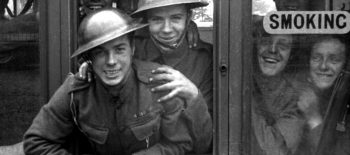Article on the occasion of the participation of Ukrainian authors in the Brussels Comic Book Festival by Artur Wabik
Following 1945, Europe remained divided by the Iron Curtain, which could be infiltrated from time to time only. One of the scarce goods smuggled through were comic books, and more specifically, the famous Vaillant magazine, which became an inspiration for scores of Polish authors. Even though it did have its East European counterparts, they were never quite on a par with its editorial level. In time, however, Eastern Europe developed its own comics market. Nonetheless, many of the series created in Bulgaria, Czechoslovakia, Poland or Hungary were reminiscent of the classic francophone series. Things did not look up though in the Soviet Union. In Ukraine, the comic virtually did not exist until the USSR’s collapse in 1991.
The leading comic book artist in Ukraine today is Igor Baranko. Born in 1970 in Kiev, as a young man he encountered the early works of Grzegorz Rosiński (which were available in Poland at the time), as well as the French paper L’Humanite, which was available in the Soviet Union. Baranko reminisces that this was the turning point for him which determined his future career choice. In 1993-1998, he published some works on the Ukrainian market which was stagnant at the time. Those included “Mamaya victorious”, “The Return of Mamaya”, and “Svetoslav and the Viking”. At the same time, he submitted his works to European publishing houses and fanzines, however unsuccessfully.
In 1999, Baranko got lucky and won the visa lottery, which made it possible for him to move to the United States. It is there that he created his best-known comics, which were also simultaneously released by Les Humanoides Associes for the French market. He gained an international renown thanks to his comic book “Jihad” (in France, published as “The Emperor of the Ocean”), which tells the story of a Russian dictator who attempts to conjure the spirits of Genghis Khan and the Golden Orde in order to create an empire reaching from the Pacific to the Atlantic.
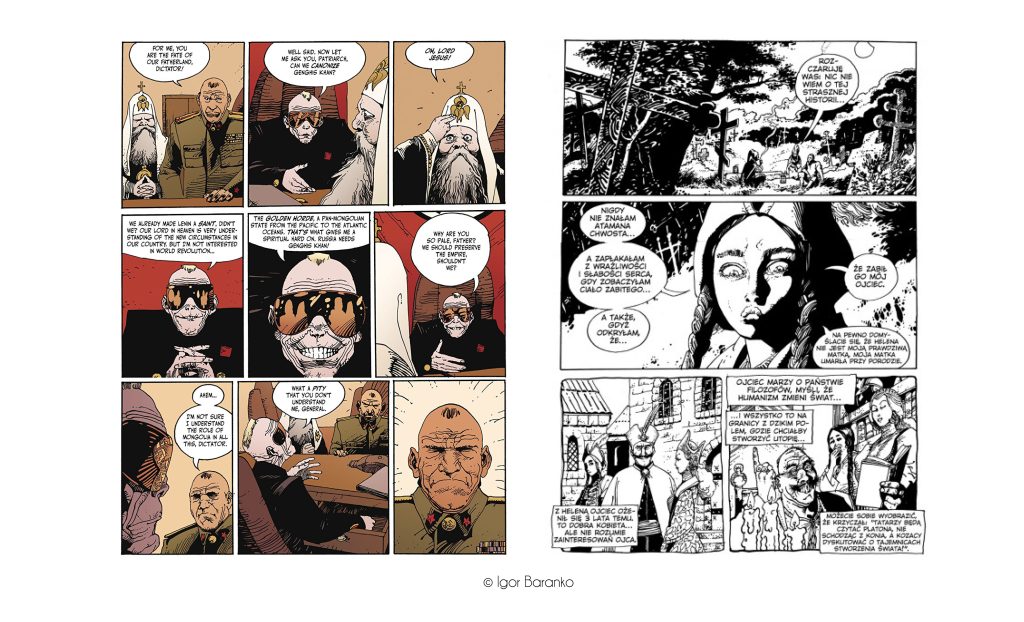
The Polish reader was introduced to him some years ago, thanks to the comic book “Pitifiada”, published since 2000 in instalments by the illustrated comic strip magazine AQQ. In spite of that, Baranko only gained a wider acclaim in Poland towards the end of the first decade of the 21st century, thanks to “Maxim the Wasp” comic, which is set in the 17th century Republic of Poland. It is an engaging crime story, whose protagonist is a Cossack – a figure of importance to the Ukrainian national identity.
The figure of a Cossack is also explored in a series of adventure comics “Dagopak” by Maxym Prasolov, Oleksiy Chebykin and Oleg Kolov. Its plot centres around Cossacks of the Zaporizhzhya Sich, members of a powerful knightly order of the masters of combat and magic in the Ukraine of the Middle Ages. In an introduction to the comic the editor emphasizes that one cannot picture Ukraine without the Cossacks and the Sich culture, which, even today, constitute the foundation of the Ukrainian statehood.
Speaking of publishers, it is worth mentioning Ukrainian Assembly Comix, a Lviv-based association of creators, small publishers and comic stores, located in Lviv and Kolomyia, among other cities. The project is headed by Bohdan Kordoba (screenwriter and publisher) and Ruslana Koropetska (editor-in-chief). Among the artists affiliated with UA Comix are screenwriters and cartoonists Andriy Dankovych (,,Sarcophagus, ,,Blight”), Anton-Yaroslav “Fudjack” Semeniuk (,,Anti-heroes, ,,Three Against Evil”, with Taras Yarmus), Yarko Filevich, and many others.
In response to the 2014 Russian aggression in Crimea and Donbas, the publishing project “Volya” (The Will) was created, which is to some extent modelled on the US market. The subsequent albums released within its framework, although drawn by different cartoonists, are part of a common universe, featuring authentic historical figures. Among them there are Hetman Pavlo Skoropadsky, Cossack Maxim Krzywonos, the ghost of Czar Nicholas II, and Polish spy Agnieszka Brzezinska. The plot of the entire series is set against the backdrop of the Ukrainian Revolution of 1917-1921. “Will,” however, is not a historical comic, as attested to by the steampunk robots and zombie Bolsheviks that appear in it.

The originator and producer of “Volya” is Vyacheslav Bugayov, while one of the screenwriters is Denys Skorbatiuk, a translator and researcher of the history of the Ukrainian comics. In addition to comics, the world of “Volya” includes a board game, a novel and collectible figures. Such wide-ranging production allows “Volya” to be considered the first Ukrainian IP (intellectual property) in Western style, on the basis of which screen adaptations and adaptations for other media are produced. “Volya” was even appreciated by former Ukrainian President Petro Poroshenko, who has a copy of the comic in his library.
Parallel to “Volya,” the series “Cyborgs,” dedicated to the famous Ukrainian army unit, which participated, among other things, in the battles for the Donetsk airport, began to appear on the Ukrainian market. In this series, however, there is no room for paranormal phenomena and an alternative version of history; subsequent issues faithfully recount the events of the past eight years.
Following the escalation of Russian aggression against Ukraine in February of this year, many illustrators joined the defense effort, while many others left the country. One of them is Kateryna Kosheleva, who now lives in Wrocław (Breslau), Poland, where she is working on her monumental comic book “For Their Own Good,” which maintains a post-apocalyptic convention. Subsequent episodes can be read for free on the artist’s website, which in return asks for donations to the Ukrainian armed forces. The comic is being produced in English. More than a hundred high-quality boards are already available.
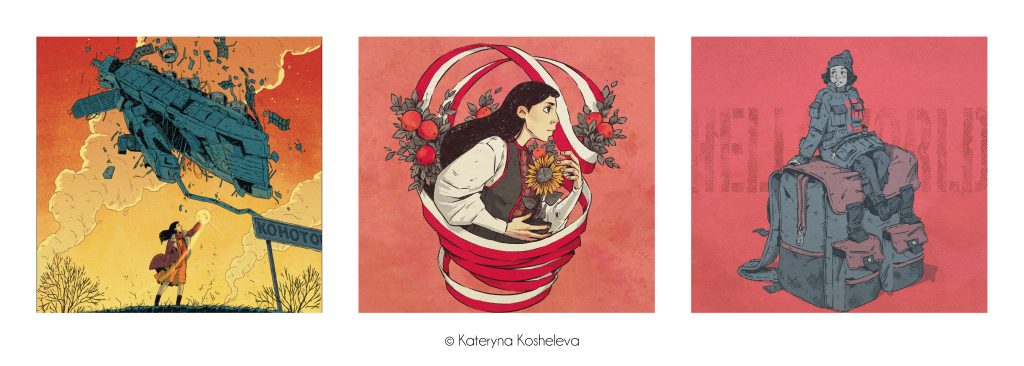
The most interesting phenomenon of the past few months are the short documentary comics created by female artists who are in the war zone and published in real time on Instagram. A native of Bakhmut in the Poltava region, Masha Vyshedska creates a series of one-frame comics, “Stories of People Who Stayed in Ukraine,” in which she portrays current events in the east of the country. Importantly, she writes the dialogues in English, thus reaching a wider audience.
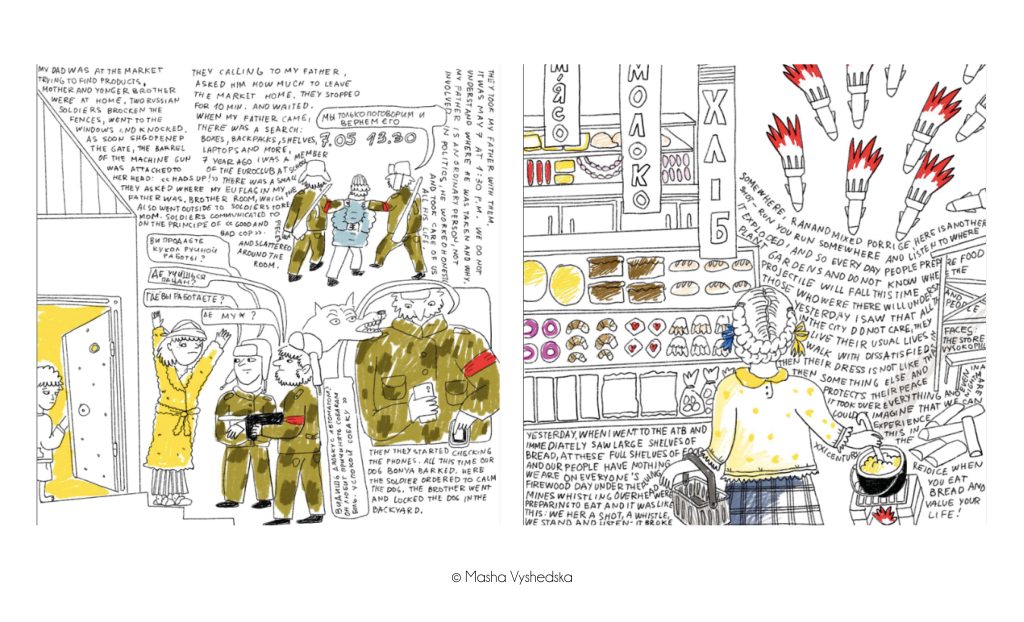
“Double Exposure” is a series of drawing works by Inga Levi, a Kiev-based artist who employs a narrative device which juxtaposes wartime events with similar ones from peacetime. The images are superimposed in such a way, and the viewers have follow the selected lines with their own eyes, which allows them to see only one of the two depicted scenes. Levi’s cartoons are featured on her social media profiles, as well as in the Ukrainian pavilion at this year’s Venice Biennale.
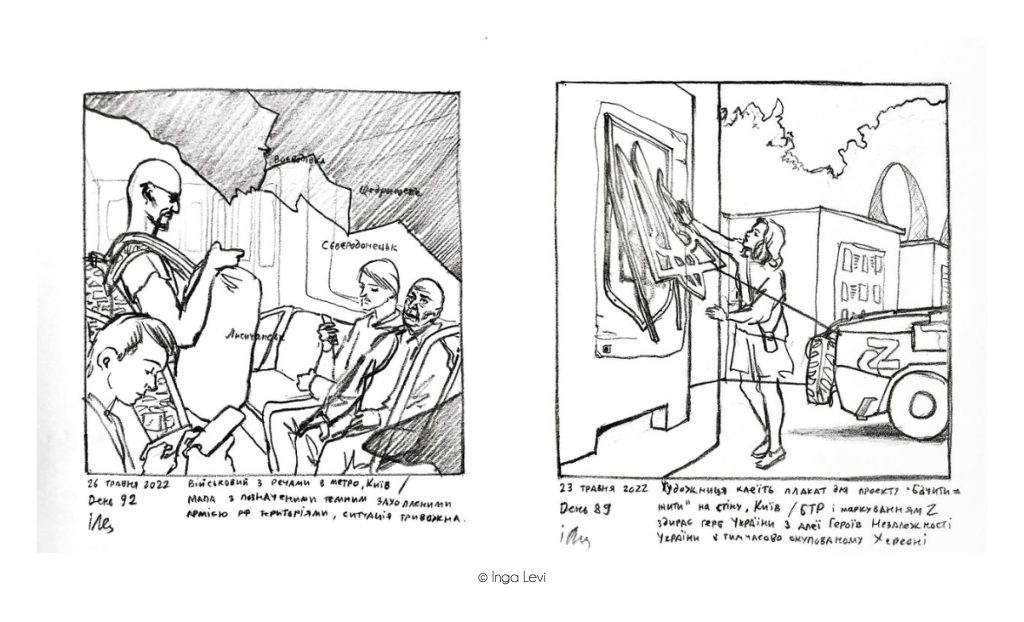
The series of illustrations by Dartsya Zironko, “The New Ukrainian Pantheon,” depicting fighters, volunteers and medics posed as ancient deities, cannot be omitted from this list. The illustrations are in great demand, and as a result have already made their way, among others, onto T-shirts. Zironka has made the designs available free of charge to anyone, only asking for donations to support the defense of Ukraine.
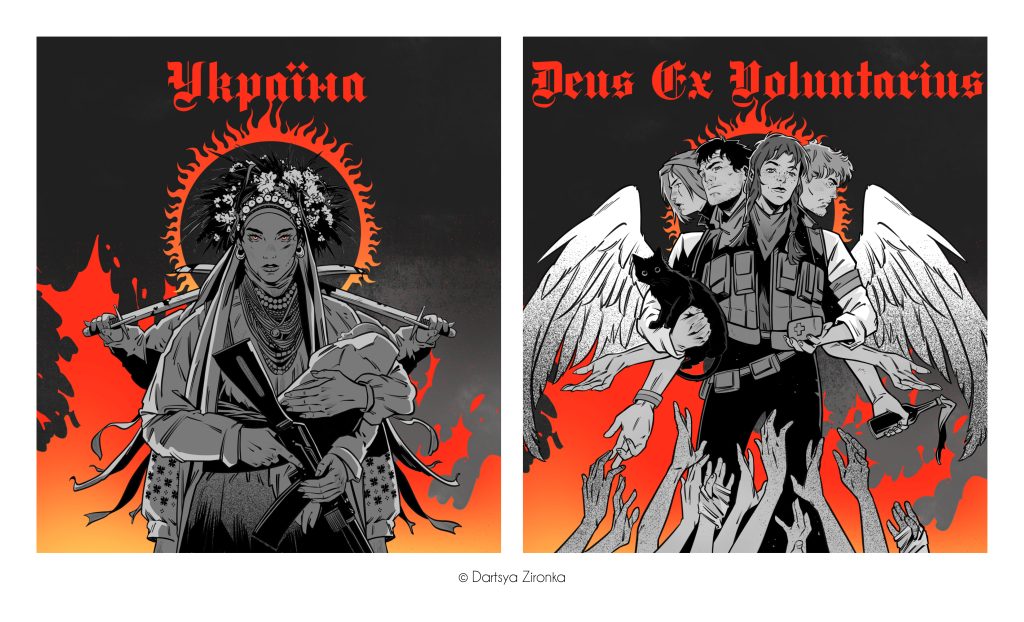
Echoes of recent tragic events, such as the attack on the train station in Kramatorsk and the massacre in Bucha, can be found in the illustrations of Albina Kolesnichenko, who lives in Chernichov. In those, the young artist devotes a lot of space to the subject of refugees and humanitarian aid. She also encourages people to donate money to charitable organizations.
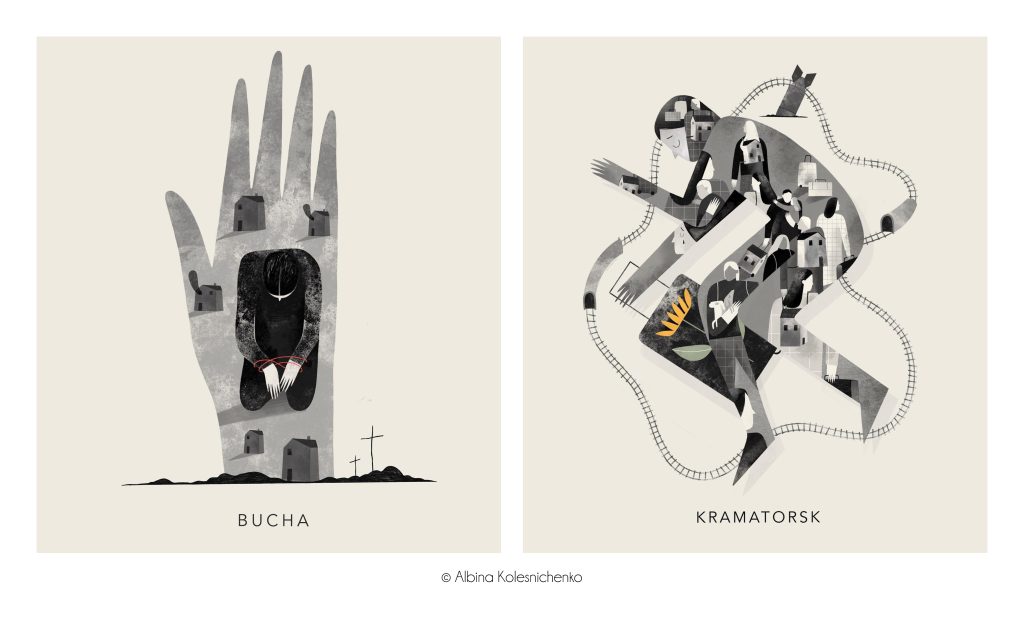
The above examples clearly show that Ukrainian comic artists and illustrators are not indifferent to the war in Ukraine and are actively involved in informing the world about it. Undeniably, the comics are a reflection of their times, and both are worth being studied.
Artur Wabik
This year, the Ukrainian artist invited by the Polish Institute in Brussels to the Comic Book Festival is
Yulia Vus
Come and meet her from the 9th to the 11th at Tour et Taxis

